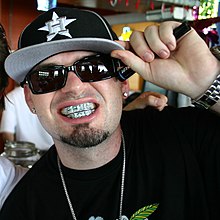
A goatee is a style of facial hair incorporating hair on one's chin but not the cheeks. The exact nature of the style has varied according to time and culture.

A goatee is a style of facial hair incorporating hair on one's chin but not the cheeks. The exact nature of the style has varied according to time and culture.
Until the late 20th century, the term goatee was used to refer solely to a beard formed by a tuft of hair on the chin—as on the chin of a goat, hence the term 'goatee'. [1] By the 1990s, the word had become an umbrella term used to refer to any facial hair style incorporating hair on the chin but not the cheeks; [2] there is debate over whether this style is correctly called a goatee or a Van Dyke. [3]
The style dates back to Ancient Greece and Ancient Rome. The god Pan was traditionally depicted with goat-like features, including a goatee. When Christianity became the dominant religion and began copying imagery from pagan myth, Satan was given the likeness of Pan, [4] leading to Satan traditionally being depicted with a goatee [5] in medieval art and Renaissance art.
The goatee would not enjoy widespread popularity again until the 1940s, when it became a defining trait of the beatniks in the post-World War II United States. The style remained popular amongst the counter-culture until the 1960s before falling out of favor again. In the 1990s, goatees with incorporated mustaches became fashionable for men across all socioeconomic classes and professions, and have remained popular into the 2010s.

Satan, also known as the Devil, and sometimes also called Lucifer in Christianity, is an entity in Abrahamic religions that seduces humans into sin or falsehood. In Judaism, Satan is seen as an agent subservient to God, typically regarded as a metaphor for the yetzer hara, or "evil inclination". In Christianity and Islam, he is usually seen as a fallen angel or jinn who has rebelled against God, who nevertheless allows him temporary power over the fallen world and a host of demons. In the Quran, Shaitan, also known as Iblis, is an entity made of fire who was cast out of Heaven because he refused to bow before the newly created Adam and incites humans to sin by infecting their minds with waswās.
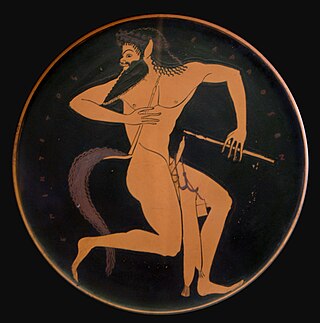
In Greek mythology, a satyr, also known as a silenus or silenos, and selini (plural), is a male nature spirit with ears and a tail resembling those of a horse, as well as a permanent, exaggerated erection. Early artistic representations sometimes include horse-like legs, but, by the sixth century BC, they were more often represented with human legs. Comically hideous, they have mane-like hair, bestial faces, and snub noses and they always are shown naked. Satyrs were characterized by their ribaldry and were known as lovers of wine, music, dancing, and women. They were companions of the god Dionysus and were believed to inhabit remote locales, such as woodlands, mountains, and pastures. They often attempted to seduce or rape nymphs and mortal women alike, usually with little success. They are sometimes shown masturbating or engaging in bestiality.
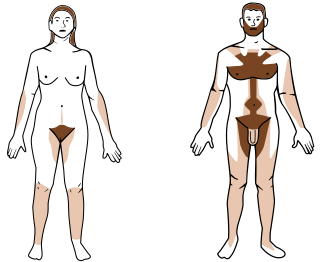
Hair removal, also known as epilation or depilation, is the deliberate removal of body hair or head hair.

A beard is the hair that grows on the jaw, chin, upper lip, lower lip, cheeks, and neck of humans and some non-human animals. In humans, usually pubescent or adult males are able to start growing beards, on average at the age of 21.
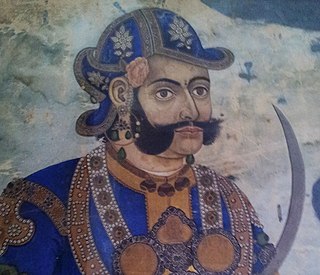
Sideburns, sideboards, or side whiskers are facial hair grown on the sides of the face, extending from the hairline to run parallel to or beyond the ears. The term sideburns is a 19th-century corruption of the original burnsides, named after American Civil War general Ambrose Burnside, a man known for his unusual facial hairstyle that connected thick sideburns by way of a moustache, but left the chin clean-shaven.

A moustache is a growth of facial hair grown above the upper lip and under the nose. Moustaches have been worn in various styles throughout history.

A Fu Manchu moustache or simply Fu Manchu, is a full, straight moustache extending from under the nose past the corners of the mouth and growing downward past the clean-shaven lips and chin in two tapered "tendrils", often extending past the jawline. An expansion of the Fu Manchu sometimes includes a third long "tendril" descending from a small patch on the chin.
A soul patch, also known as a mouche, is a single small patch of facial hair just below the lower lip and above the chin.

Fashion in the period 1550–1600 in European clothing was characterized by increased opulence. Contrasting fabrics, slashes, embroidery, applied trims, and other forms of surface ornamentation remained prominent. The wide silhouette, conical for women with breadth at the hips and broadly square for men with width at the shoulders had reached its peak in the 1530s, and by mid-century a tall, narrow line with a V-lined waist was back in fashion. Sleeves and women's skirts then began to widen again, with emphasis at the shoulder that would continue into the next century. The characteristic garment of the period was the ruff, which began as a modest ruffle attached to the neckband of a shirt or smock and grew into a separate garment of fine linen, trimmed with lace, cutwork or embroidery, and shaped into crisp, precise folds with starch and heated irons.
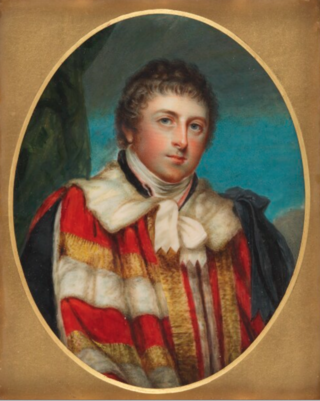
An eponymous hairstyle is a particular hairstyle that has become fashionable during a certain period of time through its association with a prominent individual.
The World Beard and Moustache Championships is a biennial competition hosted by the World Beard and Moustache Association (WBMA), in which men with beards and moustaches display lengthy, highly styled facial hair.

Judaism prohibits shaving with a razor on the basis of a rabbinic interpretation of Leviticus 19:27, which states, "Ye shall not round the corners of your heads, neither shalt thou mar the corners of thy beard." The Mishnah interprets this as a prohibition on using a razor on the beard.

A Van Dyke is a style of facial hair named after the 17th-century Flemish painter Anthony van Dyck (1599–1641). The artist's name is today normally spelt as "van Dyck", though there are many variants, but when the term for the beard became popular "Van Dyke" was more common in English. A Van Dyke specifically consists of any growth of both a moustache and goatee with all hair on the cheeks shaved. Even this particular style, though, has many variants, including a curled moustache versus a non-curled one and a soul patch versus none. The style is sometimes called a "Charlie" after King Charles I of England, who was painted with this type of beard by van Dyck. "Pike-devant" or "pickedevant" are other little-known synonyms for a Van Dyke beard.

The goat or domestic goat is a species of domesticated goat-antelope that is mostly kept as livestock. It was domesticated from the wild goat of Southwest Asia and Eastern Europe. The goat is a member of the family Bovidae, meaning it is closely related to the sheep. There are over 300 distinct breeds of goat. It is one of the oldest domesticated species of animal, according to archaeological evidence that its earliest domestication occurred in Iran at 10,000 calibrated calendar years ago.

Facial hair is hair grown on the face, usually on the chin, cheeks, and upper lip region. It is typically a secondary sex characteristic of human males. Men typically start developing facial hair in the later stages of puberty or adolescence, around fifteen years of age, and most do not finish developing a full adult beard until around eighteen or later. However, large variations can occur; boys as young as eleven have also been known to develop facial hair, and some men do not produce much facial hair at all.

Facial hair in the military has been at various times common, prohibited, or an integral part of the uniform.

Mexican mask-folk art refers to the making and use of masks for various traditional dances and ceremony in Mexico. Evidence of mask making in the region extends for thousands of years and was a well-established part of ritual life in the pre-Hispanic territories that are now Mexico well before the Spanish conquest of the Aztec Empire occurred. In the early colonial period, evangelists took advantage of native customs of dance and mask to teach the Catholic faith although later, colonial authorities tried to ban both unsuccessfully. After Mexican Independence, mask and dance traditions showed a syncretism and mask traditions have continued to evolve into new forms, depicting Mexico's history and newer forms of popular culture such as lucha libre. Most traditional masks are made of wood, while some are made from leather, wax, cardboard, papier-mâché or other materials. Masks commonly depict Europeans, Afro-Mexicans, old men and women, animals, and the fantastic or the supernatural, especially demons or the devil.

Self-Portrait with a Sunflower is a self-portrait by Anthony van Dyck, a Flemish Baroque artist from Antwerp, then in the Spanish Netherlands. The oil on canvas painting is generally between 1632 and 1633. His successful ventures in the Spanish Netherlands and Italy propelled van Dyck into a career as court painter. Van Dyck was serving as "principal Paynter in order to their Majesties" at the court of Charles I of England when he created this self-portrait. The symbolism behind the sunflower and gold chain have been a point of contention amongst various art historians. Van Dyck's dedication to capturing the likeness of his models was the basis for his strong influence over the art of portraiture long after his death in 1641. His portrait technique evolved into what is referred to as his Late English period as seen in Self-Portrait with a Sunflower. This work is now in the private collection of the Duke of Westminster, housed at Eaton Hall in Cheshire.